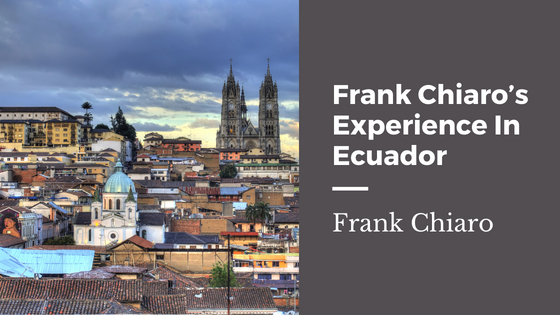For as long as he can remember, Frank Chiaro has been passionate about environmental science, and what it all entails. He is fascinated by the different plants and animals within different environments, and has continued to expand his understanding through the years. This is just one of the things that inspired him to do a 5-week volunteer trip in Ecuador, which he completed in the summer of 2022.
Frank’s trip was originally inspired by his passion for the environment, and felt like this was the perfect opportunity for him to not only volunteer his time, but to expand on his knowledge of the environment. One of the main focuses of the trip was to look at important environmental factors like seed collection, as well as better understanding how animals and plantlife work. Below are some of the main things that Frank completed during his trip:
- Seed collection for the magnolia tree, a very rare once thought to be extinct tree that is found on the Tesoro Escondido reserve.
- Went on wildlife surveys for monkeys, specifically the capuchin, the howler, and the brown headed spider monkey. All endangered species, they are able to thrive in the reserve protected from the logging companies in the area.
- Would go on surveys where he would hike the mountains of the choco, listening and watching for birds of all kinds, including tucans, parrots, and all kinds of reptiles.
- Built a meliponario, which is a bee house. He spent a lot of time with biologists who focus on insects and bees, and learned how to bee keep, as well as the environmental benefits for these bee homes in the local communities. The goal was to run a workshop to help locals learn how to harvest their own honey from these stingless bees.
- Worked with fungi experts to help harvest, photograph, and identify the many fungus that grow in the reserve. The goal was to create a simple and visual guide to the diversity of fungus in the choco rainforest.
- Set up camera traps throughout the reserve, hiking through immense collections of trees and leaves. We would then collect the SIM cards, and go through the pictures and videos that the camera had captured. We would see many different animals. From mice and wild dogs, to anteaters, cougar, ocelote, and jaguar, there was a huge collection of wildlife that we were able to identify as residing within the reserve boundaries. We would record the findings in a spreadsheet to then be entered into the official database of the reserve.
This experience is one that Frank Chiaro is one that he will never forget, and will continue to use the lessons he learned in the future.
